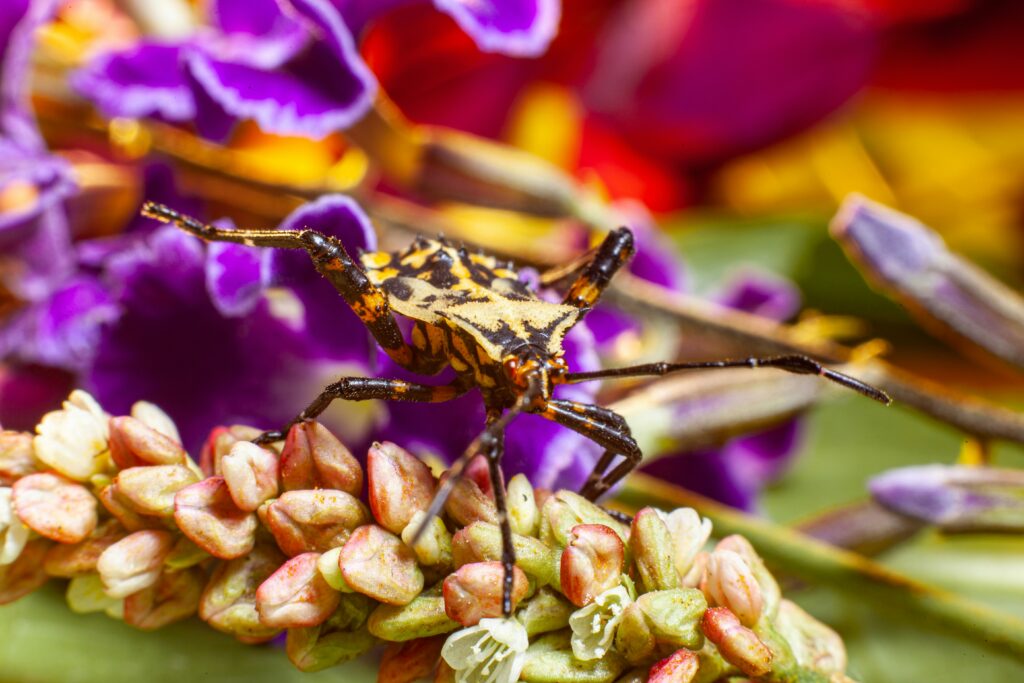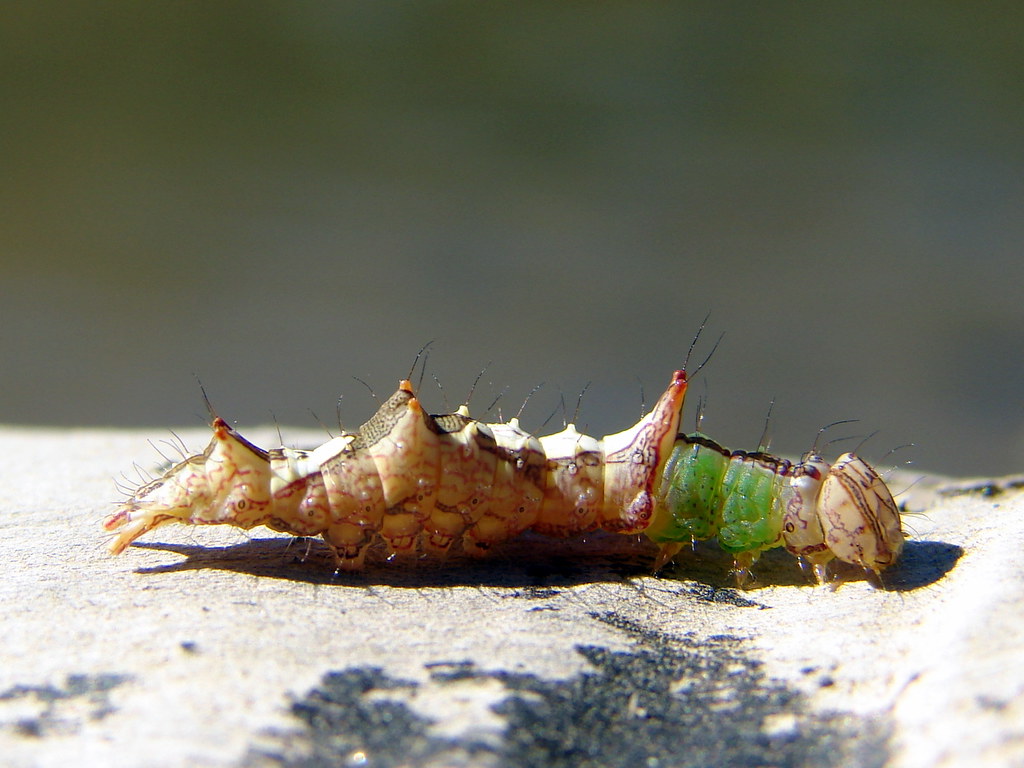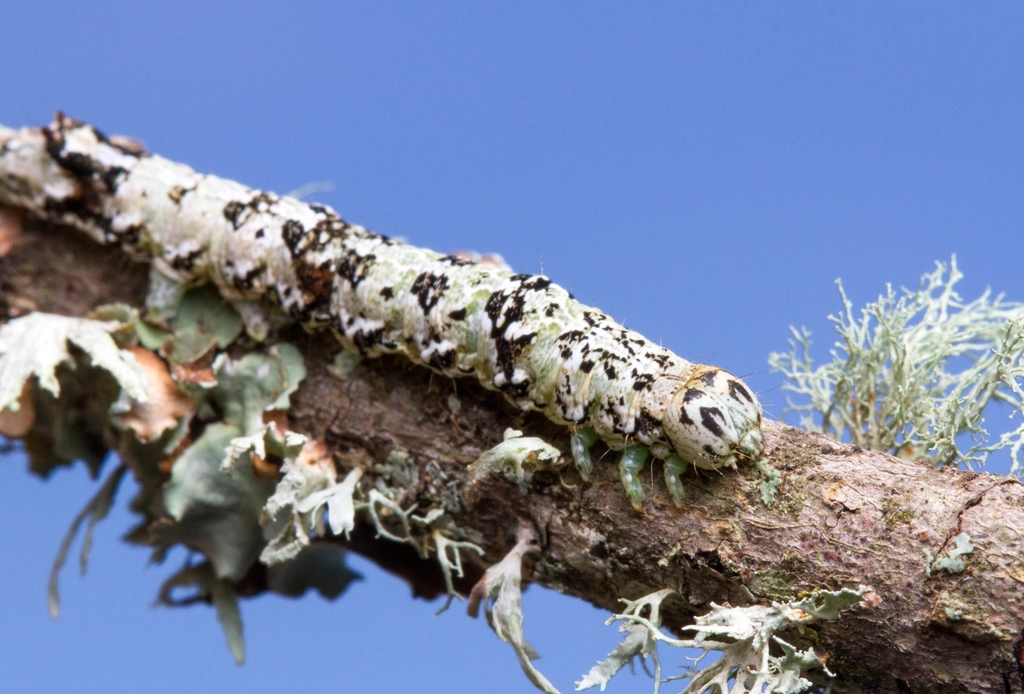Nature’s greatest illusionists don’t perform on stage or in movies – they crawl, flutter, and buzz right under our noses. Every day, millions of insects engage in an evolutionary arms race where survival depends on one crucial skill: the art of deception. From stick insects that vanish into branches to butterflies that transform into terrifying predators with a simple wing flip, these tiny creatures have perfected disguises that would make Hollywood’s best special effects teams jealous.
The Walking Stick: Nature’s Ultimate Shape-Shifter
Walking stick insects represent perhaps the most obvious yet ingenious form of camouflage in the insect world. These remarkable creatures have evolved to perfectly mimic the appearance of twigs, branches, and even leaves down to the smallest detail. Their bodies stretch out in rigid lines, complete with fake bark textures and color variations that match their preferred host plants.
What makes walking sticks truly extraordinary is their behavioral camouflage. When threatened, they freeze completely and sway gently to mimic branches moving in the breeze. Some species even shed limbs when grabbed by predators, a process called autotomy, allowing them to escape while the predator is distracted by the twitching appendage.
These masters of disguise are hiding from birds, spiders, and other insect-eating predators who hunt primarily by sight. Their camouflage is so effective that even trained entomologists sometimes struggle to spot them in their natural habitat.
Orchid Mantises: Deadly Flowers in Bloom

The orchid mantis takes camouflage to an artistic level that seems almost too perfect to be real. These stunning insects have evolved to mimic flower petals with such precision that they don’t just blend in – they actually attract prey directly to them. Their pink and white coloration, combined with petal-like leg extensions, creates a living flower that hungry pollinators can’t resist.
What’s particularly fascinating about orchid mantises is that they’ve achieved what scientists call aggressive mimicry. Instead of just hiding from threats, they use their disguise to actively hunt. Bees, flies, and other pollinating insects approach what they believe is a nectar-rich flower, only to become lunch.
These floral predators are primarily hiding from birds and larger predators while simultaneously exploiting the trust of their prey. It’s a double-edged evolutionary strategy that showcases nature’s incredible ability to solve multiple survival challenges with a single adaptation.
Leaf Insects: The Green Ghosts of the Forest

Leaf insects have taken plant mimicry to extraordinary lengths, developing not just the color and shape of leaves but also their texture and even apparent damage patterns. These insects sport wings that look exactly like leaves, complete with realistic vein patterns, brown spots that mimic disease, and irregular edges that suggest insect damage.
The most remarkable aspect of leaf insect camouflage is their ability to incorporate movement into their disguise. When walking, they rock back and forth to simulate leaves swaying in the wind. They’ve even evolved different color morphs to match various stages of leaf development, from bright green new growth to yellowing autumn leaves.
These living leaves are evading the sharp eyes of birds, reptiles, and arachnids that patrol forest canopies. Their camouflage is so convincing that researchers have observed birds landing directly on them without recognizing their true nature.
Dead Leaf Butterflies: Masters of Seasonal Disguise
Dead leaf butterflies represent one of evolution’s most sophisticated seasonal disguises. When their wings are closed, these butterflies become virtually indistinguishable from dried, fallen leaves. Their underwings display perfect brown coloration with realistic leaf veins, spots that mimic fungal infections, and even fake holes that suggest insect damage.
The transformation these butterflies undergo is nothing short of magical. With wings spread, they reveal brilliant colors and patterns, but the moment they land and fold their wings, they vanish into the leaf litter. Some species have even evolved transparent “windows” in their wings that mimic the holes naturally found in decomposing leaves.
These autumn impersonators are hiding from insectivorous birds, lizards, and spiders that hunt in forest understories. Their disguise allows them to rest safely during daylight hours while remaining virtually invisible to predators scanning the forest floor.
Bark Mantises: Living Tree Skin
Bark mantises have perfected the art of becoming one with tree trunks through intricate texture mimicry that goes beyond simple coloration. These insects have developed rough, irregular body surfaces that perfectly match the bark patterns of their chosen trees. Their coloration includes subtle variations in brown, gray, and green that mirror the complex hues found in tree bark.
What sets bark mantises apart is their ability to position themselves in natural-looking poses that enhance their camouflage. They align their bodies with bark ridges and position their legs to follow natural crack patterns in the tree surface. When motionless, they become virtually undetectable even at close range.
These bark mimics are avoiding detection by birds, small mammals, and other predators that might disturb their patient hunting strategy. Their camouflage allows them to remain motionless for hours while waiting for unsuspecting prey to venture within striking distance.
Thorn Bugs: Nature’s Spiky Deceivers

Thorn bugs have evolved one of the most creative disguises in the insect world by transforming their bodies into perfect replicas of plant thorns. These small insects develop pronounced spikes and points on their backs that exactly match the thorns found on their host plants. Their positioning along plant stems creates seamless rows of fake thorns that fool even careful observers.
The genius of thorn bug camouflage lies in their social behavior. Groups of these insects position themselves along branches in patterns that perfectly mimic natural thorn arrangements. They’ve even evolved different sizes within colonies to match the varied thorn sizes found on real plants.
These thorny imposters are hiding from predators who avoid thorny plants to prevent injury. By mimicking these defensive plant structures, thorn bugs gain protection while feeding openly on plant sap in broad daylight.
Geometrid Moths: Masters of Bark Impersonation
Geometrid moths have developed some of the most sophisticated bark camouflage patterns in the insect kingdom. Their wing patterns include incredibly detailed reproductions of bark textures, complete with realistic lichen patches, wood grain patterns, and color variations that match specific tree species. When resting with wings spread against tree trunks, they become virtually invisible.
These moths demonstrate remarkable behavioral adaptations that enhance their camouflage effectiveness. They select resting spots that perfectly match their wing patterns and orient themselves to align with natural bark features. Some species even adjust their body position throughout the day to maintain optimal camouflage as lighting conditions change.
Geometrid moths are hiding from nocturnal predators like bats, spiders, and night-hunting birds. Their bark mimicry provides crucial protection during daylight hours when they remain motionless and vulnerable to discovery.
Ant-Mimicking Spiders: The Ultimate Identity Thieves

While technically arachnids rather than insects, ant-mimicking spiders deserve recognition for their extraordinary ability to impersonate ants through both appearance and behavior. These spiders have evolved body shapes, coloration, and movement patterns that perfectly mimic various ant species. They even wave their front legs like antennae to complete the illusion.
The behavioral mimicry displayed by these spiders is particularly impressive. They move with the characteristic quick, jerky motions of ants and even participate in ant trails without being detected. Some species have evolved to mimic specific ant species so precisely that they can infiltrate ant colonies.
These arachnid imposters are hiding from predators who avoid ants due to their aggressive nature, painful bites, or chemical defenses. By adopting ant identity, these spiders gain protection while gaining access to ant-rich hunting grounds.
Lanternflies: False Advertisement Champions

Lanternflies employ a sophisticated multi-layered disguise strategy that includes both camouflage and startle displays. When at rest, their forewings display cryptic bark-like patterns that provide excellent camouflage against tree trunks. However, when threatened, they reveal brightly colored hindwings with large eyespots designed to startle predators.
The most remarkable aspect of lanternfly disguise is their ability to switch between camouflage and warning display instantaneously. This dual strategy allows them to remain hidden during normal activities while having a backup defense mechanism when discovered. Their eyespots are so realistic that they can frighten predators into hesitating long enough for escape.
These winged deceivers are hiding from birds, reptiles, and other visual predators while maintaining the ability to escape through intimidation when camouflage fails. Their flexible disguise strategy represents an advanced evolutionary solution to predation pressure.
Flower Crab Spiders: Petal Perfect Predators

Flower crab spiders have mastered the art of floral mimicry to such a degree that they can change colors to match different flower species. These remarkable arachnids position themselves in flower centers where their body shape and coloration make them virtually indistinguishable from flower parts. Their color-changing ability allows them to hunt across multiple flower types.
What makes flower crab spiders truly exceptional is their patient hunting strategy combined with perfect camouflage. They remain motionless for hours in flower centers, waiting for pollinating insects to approach close enough for capture. Their camouflage is so effective that prey insects often land directly on them.
These floral hunters are hiding from predators while simultaneously exploiting the trust of their prey. Their disguise allows them to hunt in exposed locations where other spiders would be too vulnerable to survive.
Stick Bug Nymphs: Baby Masters in Training

Young stick insects, called nymphs, display some of the most impressive early-stage camouflage abilities in the insect world. Even as tiny juveniles, they perfectly mimic small twigs, bud scars, and leaf stems with remarkable precision. Their camouflage abilities are often even more refined than their adult counterparts due to their smaller size and greater vulnerability.
These juvenile masters demonstrate that effective camouflage is not learned but rather genetically programmed. From the moment they hatch, stick bug nymphs instinctively adopt proper camouflage postures and behaviors. They often cluster together to mimic bundles of small twigs or leaf arrangements.
Young stick insects are hiding from an even broader range of predators than adults, including smaller spiders, ants, and juvenile birds that specifically target easy prey. Their advanced camouflage abilities are essential for survival during their most vulnerable life stages.
Conclusion: Nature’s Greatest Magic Show

The world of insect camouflage reveals evolution’s incredible creativity in solving survival challenges through deception and disguise. These masters of illusion have developed strategies that surpass human imagination, from shape-shifting stick insects to color-changing flower spiders. Each species has evolved unique solutions to the fundamental challenge of avoiding detection while meeting their survival needs.
What’s truly remarkable about these natural magicians is how they’ve perfected their disguises over millions of years of evolutionary refinement. Every detail, from texture patterns to behavioral movements, has been honed through countless generations of natural selection. Their success demonstrates that in nature, the best defense is often a good disguise.
The next time you walk through a garden, forest, or natural area, remember that you’re surrounded by these incredible performers putting on nature’s greatest magic show. The question isn’t whether they’re there – it’s whether you’re skilled enough to spot them. What other hidden masters might be watching you right now, perfectly disguised in plain sight?
